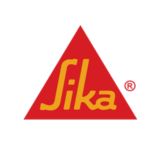Sustainability at Sika
As a leading manufacturer of specialty chemicals for the construction and manufacturing sectors, and a member of the Canadian Green Building Council (CaGBC), Sika Canada is engaged in the transparency process associated with sustainable construction. Sika has developed in collaboration with Groupe AGÉCO Environmental Product Declarations (EPD) for flooring products but also for concrete maintenance & repair materials, in order to provide architects, engineers and other stakeholders in LEEDv4 projects, information on the environmental performance of these products. This engagement is also a positive response from Sika Canada to the CBDCa-QC and several architectural firms joint initiative for durable construction materials.
EPD
What is an environmental product declaration (EPD)?
An environmental product declaration is a standardized document that summarizes the information on a product’s environmental performance. An EPD is based on the results of a life cycle analysis (LCA), which is a scientific approach to assess an environmental footprint in keeping with the internationally recognized ISO 14040 standard series. The declaration is drawn up according to a guideline that sets out standardized analysis and comparison rules for all types of building materials and products.
Download EPD's
VOC Emission Testing
What is VOC Emission Testing?
Many building products used indoors contain organic chemicals that can vaporize and cause contamination of indoor air. As a result, building occupants are subjected to inhalation exposures. These volatile organic compounds (VOCs) are present in products as residual solvents, chemical reaction or dissociation products, purposefully introduced additives, and manufacturing contaminants. The emission testing process measures the rate of the release of those VOCs to indoor air.
VOCs of potential concern include:
• Formaldehyde
• Chronic systemic toxins such as toluene, styrene, phenol, and naphthalene
• Carcinogens, mutagens, and teratogens as defined by the International Agency for Research on Cancer, the National Toxicology Program Report on Carcinogens, and CA Proposition 65
• Sensory irritants
• Odorants
VOCs contained in dry products diffuse through the material and partition to air at the material surface. The rate of release to air, termed emission rate, is determined by the concentration of the VOC in the material, the rate of its diffusion in the material, and its partitioning coefficient between the material and air. Each chemical and material combination has a characteristic release rate.
How does testing work ?
VOC emission testing consists in placing the product sample an environmental chamber under controlled temperature and relative humidity and operated with a constant flow of clean air. As VOCs are released, the concentrations of VOCs in chamber air increase. Once a steady state is achieved, the air samples are collected and analyzed. A steady-state VOC emission rate at a given time point (typically in micrograms of VOC per square meter of material per hour) is calculated as the product of the chamber air concentration and the inlet air flow rate divided by the area of the emitting product surface. Those emission rates are then used to evaluate the concentrations in buildings, which then can be compared to inhalation exposure guidelines.
(Source Berkeley Analytical)
Download VOC Emission Test Certificates
Material Ingredient Reporting
Material Ingredient Reporting for LEEDv4, Option 1
A Manufacturer Inventory transparency document used for LEEDv4 compliance that discloses the ingredients in a product and associated hazards. Such a process allows manufacturers to keep their formulations secure while still disclosing any associated hazards. Hazards can be reported to 1,000 ppm using Globally Harmonized System for the Classification and Labeling of Chemicals (GHS) or GreenScreen.
Download Manufacturer Inventory Certificates
Other Sustainability documents available
Global Reporting Initiative
As a global company, Sika is committed to sustainable development. The company honors its responsibilities by offering sustainable solutions for energy-efficient construction and innovative vehicles. It also implements numerous projects and measures aimed at boosting the Group’s economic, social, and ecological sustainability
Sustainability report
Need help for a LEED Project ?
Please contact us by mail at :
culis.christophe@ca.sika.com
Or Give us a call
Sika Canada - Head Office:
1-800-933-7452

